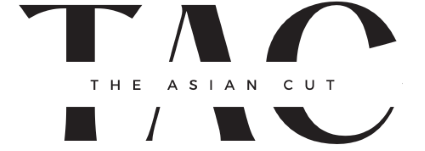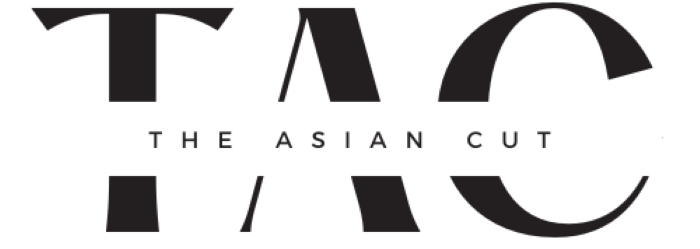Editor’s Note: The first Pride marches in Asia were held in Japan in 1994, more than 20 years after the ones held in the U.S.. Of course, “pride” is essentially a Western concept, so this isn’t to say that countries in the East were necessarily “slower” to celebrate queerness. On the contrary, as we hope to show with the films in The Asian Cut’s Pride 2024 series, Asia has such rich, diverse, and complex queer histories, particularly when it comes to its many LGBTQ+ cinema industries. And while the handful of films in this collection could never adequately cover the vastness of Queer Asia, we are hopeful that they — and the insights our writers bring — will serve as a launchpad for your curiosity, your enthusiasm, and, at the very least, your love.
The use of mirrors in film dates back to the earliest days of cinema, when they functioned primarily as tools to obtain certain shots — for instance, a frontal view of an oncoming train — in a way that was safe for the cast and crew involved. As filmmakers developed a more stylistic, even philosophical, approach to visual storytelling, this function naturally evolved. Leaning on mirrors’ inherent role as a tool to see oneself, mirrors became motifs to explore a character’s interiority, adding emotional depth to any given shot, scene, or story. You can see this across cinema history in a wide range of films, from Ingmar Bergman’s Persona to Darren Aronofsky’s Black Swan to, most recently, Todd Haynes’ May December.
Even Disney’s catalogue of light-hearted films use mirrors to add narrative and character depth. In Snow White and the Seven Dwarfs, the Magic Mirror is the impetus for the Evil Queen’s plot to murder the titular princess. Similarly, the magical mirror in Beauty and the Beast underscores the theme of sight in relation to inner and outer beauty, and how what one sees on the surface isn’t necessarily what exists beneath. We see this again in The Little Mermaid, when the sea witch Ursula (disguised as a human) peers into the mirror, revealing her true octopus form. Of course, of all the Disney Princess films, 1998’s Mulan is arguably the only one to utilize the mirror to underline a core theme that, though unintentional, carries with it sensibilities of queer cinema and the LGBTQ+ experience.
Set in China during an undisclosed imperial dynasty, Mulan follows the eponymous heroine (Ming-Na Wen) who struggles to fit into the traditional molds being thrust upon her by her family and society at large. When the Huns breach the Great Wall, and one man from every family is subsequently called to war, Mulan impersonates a male soldier in order to take her aging and ailing father’s place. By her side is a small dragon — one of the family’s mystical guardians — named Mushu (Eddie Murphy), and under the leadership of Captain Li Shang (BD Wong), Mulan and her fellow warriors march towards battle.

Mulan holds a special place in the hearts of audiences everywhere. By the time of its release, no other Disney Princess had been as in charge of her story as she had. And while she checked off all the requirements for being a Disney Princess — young, beautiful, single, etc. — what ultimately distinguished her was the fact that honour and duty were the driving forces behind her actions, rather than the archetypal romance or marriage (which had, by this point, begun to feel redundant and problematic).
As previously mentioned, reflections themselves play an integral role in Mulan (as obviously embodied by the iconic ballad, “Reflection”). Throughout the film, there are many scenes in which Mulan sees her reflection — whether in mirrors, water, or armour — and it’s always a poignant moment. Essentially, the way Mulan sees herself is in constant contention with how others both see her and wish for her to see herself. To her mother, father, and country, she must become a bride — she has no other prospect or role in life — and, what’s more, as sung in “Honour to Us All,” the best bride she can be is one who is “obedient,” dutiful, and devoid of thought or opinion (she also gets bonus points if she has “a tiny waist”). However, try as she might, Mulan doesn’t really fit any of these criteria, a reality that she wrestles with for much of the film.
The first instance in which Mulan looks into a mirror is in the aforementioned musical number, and she is effectively repulsed by the dolled-up version of her that she sees. In the subsequent musical scene, “Reflections,” she sees herself in the ripples of a water trough and in the gravestones of the family temple. Fractured and distorted, she laments not being able to be the daughter and future bride/wife that others want her to be.
Thereafter, there are pivotal moments that involve Mulan looking at her reflection: in a rain-splattered puddle, when she makes the decision to secretly go to war for her father; in her sword, when she first becomes Ping; and in the curve of her helmet, at the film’s climax, when her true identity is discovered by Shang and the troops. Interestingly, in each of these cases, her reflection is misrepresented, whether by the curvature of the material’s surface or by her own feelings of being out of place.

In essence, it’s what I call “The Queer Mirror” that Mulan looks into whenever she sees her reflection in the film — that fundamental disconnect that a queer person experiences whenever they look at themselves. Particularly for young LGBTQ+ folks who grow up being taught to act, live, and desire a certain way, especially 30 or so years ago (at the time of Mulan’s release), it’s an almost universal feeling to know that you’re not meant to be the person others expect you to be. There’s the corollary inability to put that distortion into words, leaving you questioning who you are and, more gravely, believing you are the problem.
This is perhaps why Mulan was (and still is) so meaningful for queer audiences, particularly Millennials, who related to Mulan’s journey of self-discovery. Indeed, more than just an exciting coming-of-age narrative, the Disney princess’ arc has been reread and reclaimed by LGBTQ+ audiences as a coming-out story as well. Queerness, by definition, fundamentally involves going against the grain of heteronormativity — that is, the widely accepted “truth” that men and women must marry each other and bear children, all while fulfilling their stereotypical roles as husband/father and wife/mother — by way of gender expression or sexual orientation. Mulan’s inability to adhere to the gender roles forced upon her, how she finds her inner truth and power by dressing as a man, and the romance that bubbles between her and Shang while she presents herself as male-soldier Ping — these are all queer-coded moments that echo the emotional milestones that many in the queer community have experienced.
In fact, literature surrounding just how gay Mulan is has proliferated in recent years. In 2020, Vox wrote about Mulan being a “drag king,” while Vice, a couple years earlier, dove into how Mulan was the “most bisexual cartoon ever.” Even Wong, an openly gay actor, said Shang was “sexually fluid” in a 2021 interview with them. From trans awakenings to inspiring different forms of gender expression to homoeroticism, queer folks have seen themselves — and their own coming-out — reflected in and by the film.

While it would be easy — low-hanging fruit, indeed — to say that queer folks are reading too much into Mulan, and while there’s no way Disney (a studio that has, on multiple occasions, compromised, and thus failed at, queer representation in order to adhere to whatever country’s archaic censorship rules for maximum profit) would have intentionally made the film queer, especially in the ‘90s, there’s also no ignoring the queer language being used throughout the movie. “Traditional values will disintegrate,” says one of Mulan’s ancestors, while another derides her as a “cross-dresser.” Even Mushu calls her “Miss Man” in one scene, proclaiming her journey a “drag show.” And it would be remiss not to mention how, during the final fight, Yao, Ling, and Chien-Po dress in drag in order to get past the guards and help save the Emperor.
Effectively, Mulan stands as the most sexualized Disney Princess film thus far, taking into consideration the man’s body and the woman’s body — Shang, like any prototypical muscle gay, spends half his time on-screen with his shirt off — and the attraction between one and the other. Chi-Fu (James Hong) himself presents as effeminate, “squealing like a girl” in one scene. Gender and sexuality — two pinnacles of queerness, queer discourse, and queer cinema — clearly prop up the film.
Most significantly, Mulan doesn’t have a moment in which sees her reflection and finally likes who she sees. In truth, by the end, she doesn’t need it, as she has achieved total acceptance of herself; she no longer needs to see who she is because she’s already living her truth. In this way, Mulan itself is The Queer Mirror, reflecting back at us the strength we need to be who we are and the pride in knowing that who we are is beautiful.
















